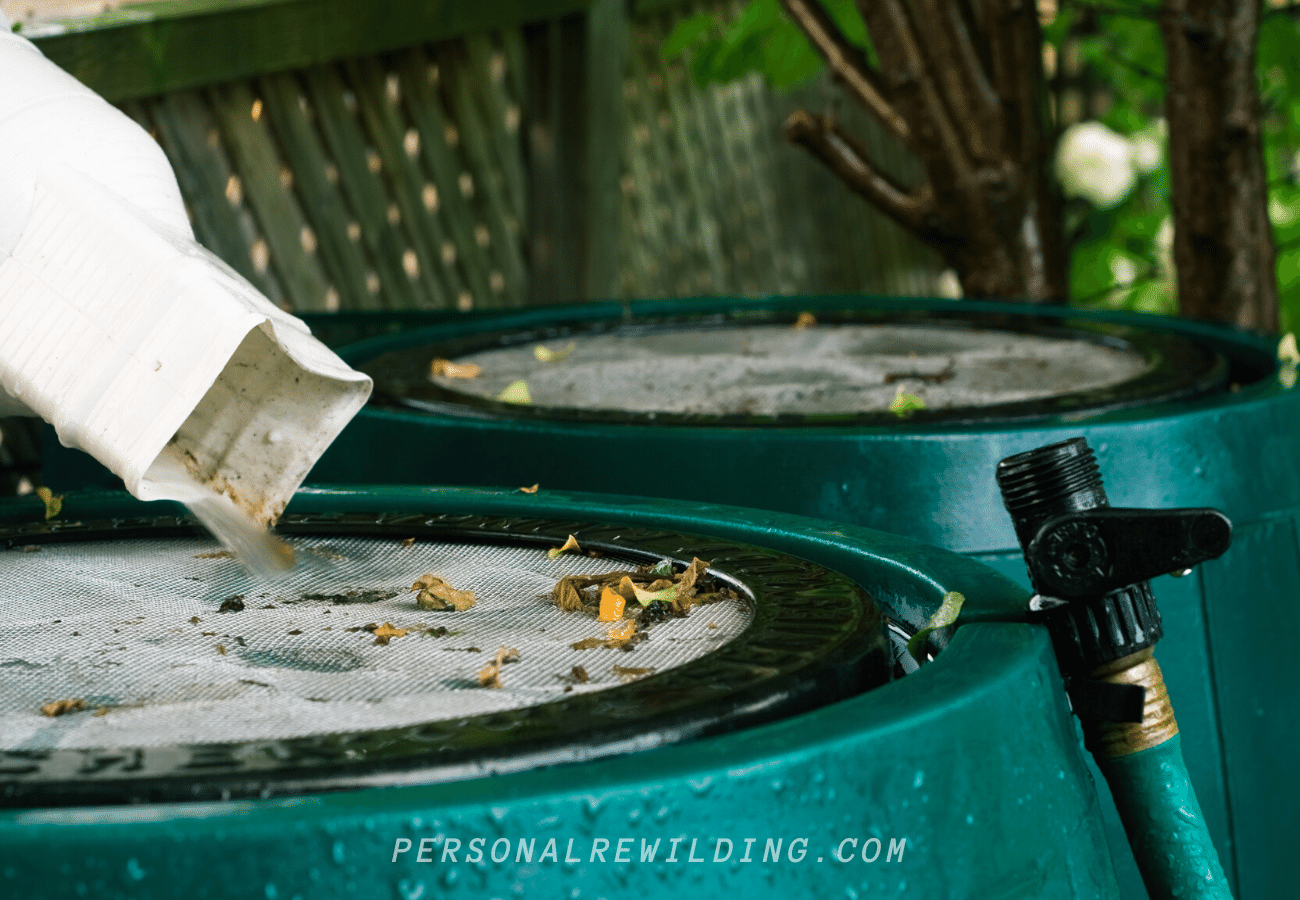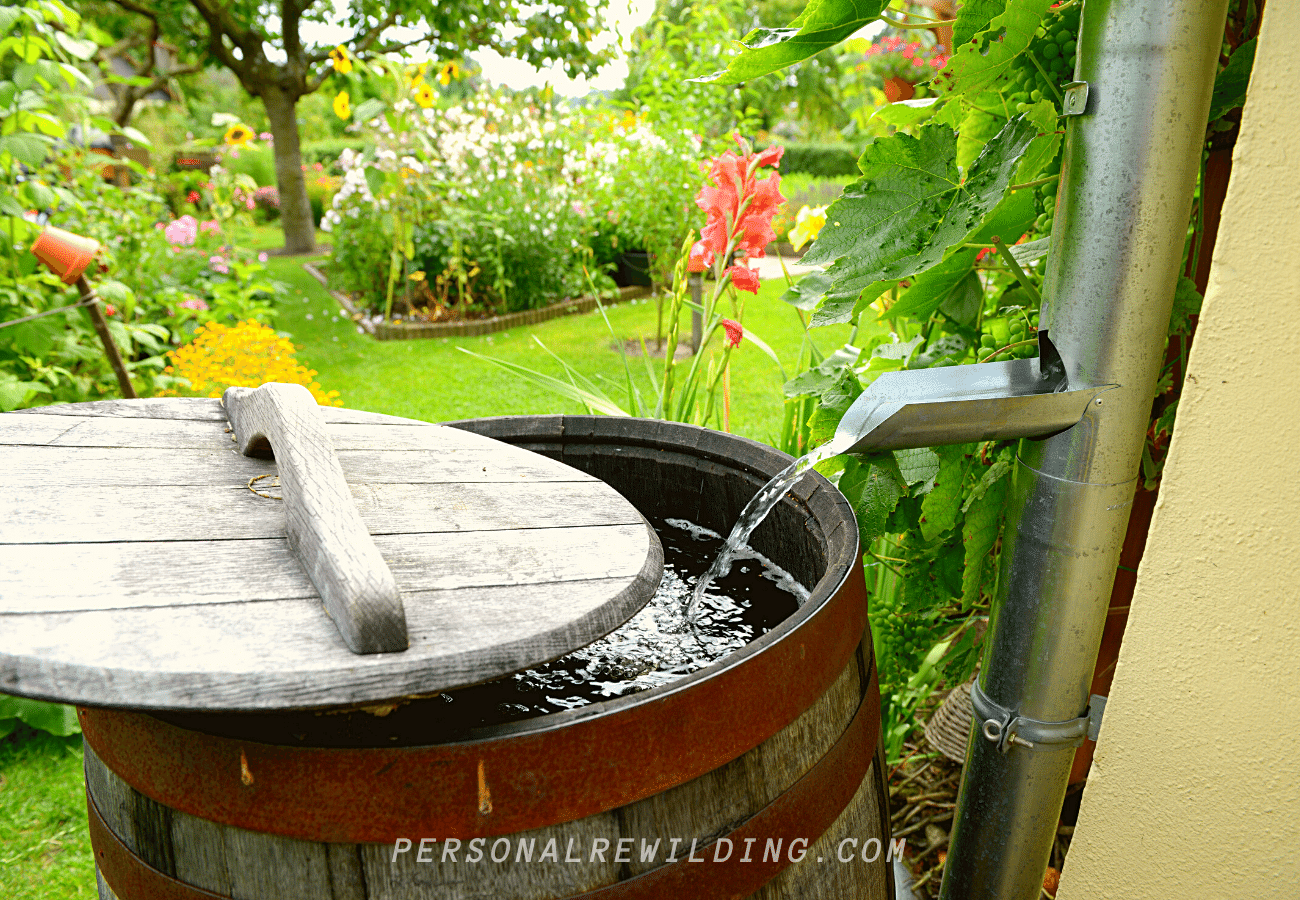- Home
- Sustainability
- Collect Rainwater
How to Collect Rainwater (And Why!)
One simple way to live more sustainably is to collect rainwater for reuse. This practice is often called rainwater harvesting.
Water is a finite resource. Drought, increased population and demand, and pollution have made that resource even more scarce and valuable.
Yet every year hundreds of millions of gallons of potable water, much of it filtered, softened, or otherwise treated, is used for watering lawns and gardens and container plants, washing cars, and filling bird baths.
Each of these uses could be supplemented by collecting rainwater, stored in barrels or tanks, and utilized as a primary water supply for these tasks. In fact, without the treatment chemicals added by municipal drinking water treatment, rainwater is often better for your lawns and gardens.
Why Collect Rainwater?
Why should you collect rainwater? Rainwater is abundant in many areas and capturing runoff from a “catchment” such as a roof is not only easy but responsible.
Frequently, rainwater falls too quickly to easily be absorbed into the ground, so it runs off over the surface, causing surface erosion and ending up in streams & rivers.
Capturing that rainwater runoff before it hits the ground has several benefits:
- It reduces your municipal or well water usage by capturing water that would otherwise run off
- By reducing your water usage, it saves you money
- It’s a more sustainable and environmentally responsible way to live, in a world where potable water is becoming a scarcer and more valuable resource
- It saves energy by bypassing the water pumping and treatment process of a central water supply
- It reduces erosion by capturing some water that would otherwise runoff
- Water captured during wet periods can be stored and utilized during drier periods
Water conservation is especially important in drier climates or urban areas, where water may be scarcer or excess rainfall runs off of paved surfaces, overwhelming storm water drainage.
Collected rainwater may be used for a variety of non-potable purposes. Some examples:
- Watering your lawn
- Watering your garden
- Watering Indoor Plants
- Filling bird baths or outdoor fountains
- Washing Cars
- Flushing Toilets
- Cleaning Decks / Patios / House Siding
Since rainwater carries natural supplies of nitrogen, it’s perfect food and drink for flower gardens and vegetables as well as containers, window boxes, and pots.

How To Collect Rainwater
Rainwater collection systems can be as simple or complex as you desire, depending on your personal needs and purposes.
Collected rainwater is gathered from runoff on elevated surfaces. For most people this means home roofs, garage roofs, and patios. Capture is done by gutters and downspouts, and through these directed to a storage vessel.
For most people, the simplest and most practical method is using rain barrels. Collection barrels of various types and styles, most with bottom spigots for easy discharge, can be purchased in most home improvement and lawn & garden stores. Or you can customize your own plastic or wooden catch barrel.
Other options for containers include mini-bulk containers like 275-gallon totes or larger tanks or cisterns, which can hold much larger volumes of rainwater but have a greater initial cost and more installation requirements. Larger volume tanks like this might be a great option if you own a farm or homestead.
Rainwater Collection Tips
Keep your rain barrel lidded and sealed whenever possible. Insects, birds, and other wildlife looking for water may foul your supply. Mosquitoes will lay eggs in open stagnant water sources.
A screen or filter should be used on the inlet of your container to remove organic debris such as leaves, seeds, and tree nuts. This will also help keep out unwanted pests such as wildlife and insects.
Organic debris in your water will rot and cause your rainwater to become foul and brackish.
Keep rain barrels out of direct sunlight whenever possible, as warm or hot water will grow algae more quickly.
Check Local Laws / Regulations
Some states or municipalities have laws governing how a property owner can collect rainwater, including how much can be collected and stored at any one time, so check your local bylaws.
You can check the regulations for your state here: Rainwater Collection Laws
For example, there are no state regulation on rainwater collection in Illinois, where we live. In Georgia, however, there are regulations regarding how collected rainwater can be used (outdoor only, for example).
In Colorado, rainwater can be harvested on private property but only to a maximum of 110 gallons.
Many states not only allow rainwater collection, but encourage it with water rebates or tax benefits.



